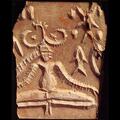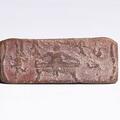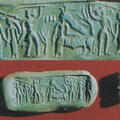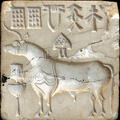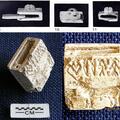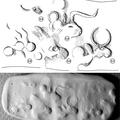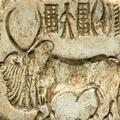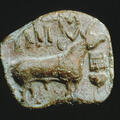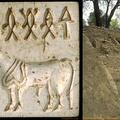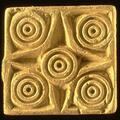Deity Seal
Deity seal from Mohenjo-daro. E.J.H. Mackay writes of what he calls a "deity, seated in what may be a yogi attitude" where, in this case, "the stool is omitted, however, and the figure is apparently seated upon the ground. The headdress consists of two horn-like objects between which there appears to be a spike of flowers. A pigtail hangs down one side of the head which has one face only, in profile, facing to the right. Unfortunately this seal is badly broken, but enough remains to show that the figure was surrounded by pictographs arranged in a somewhat haphazard fashion." (Further

